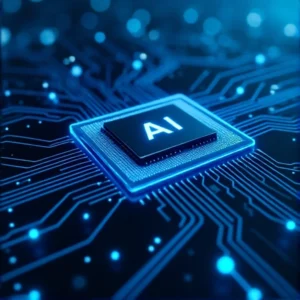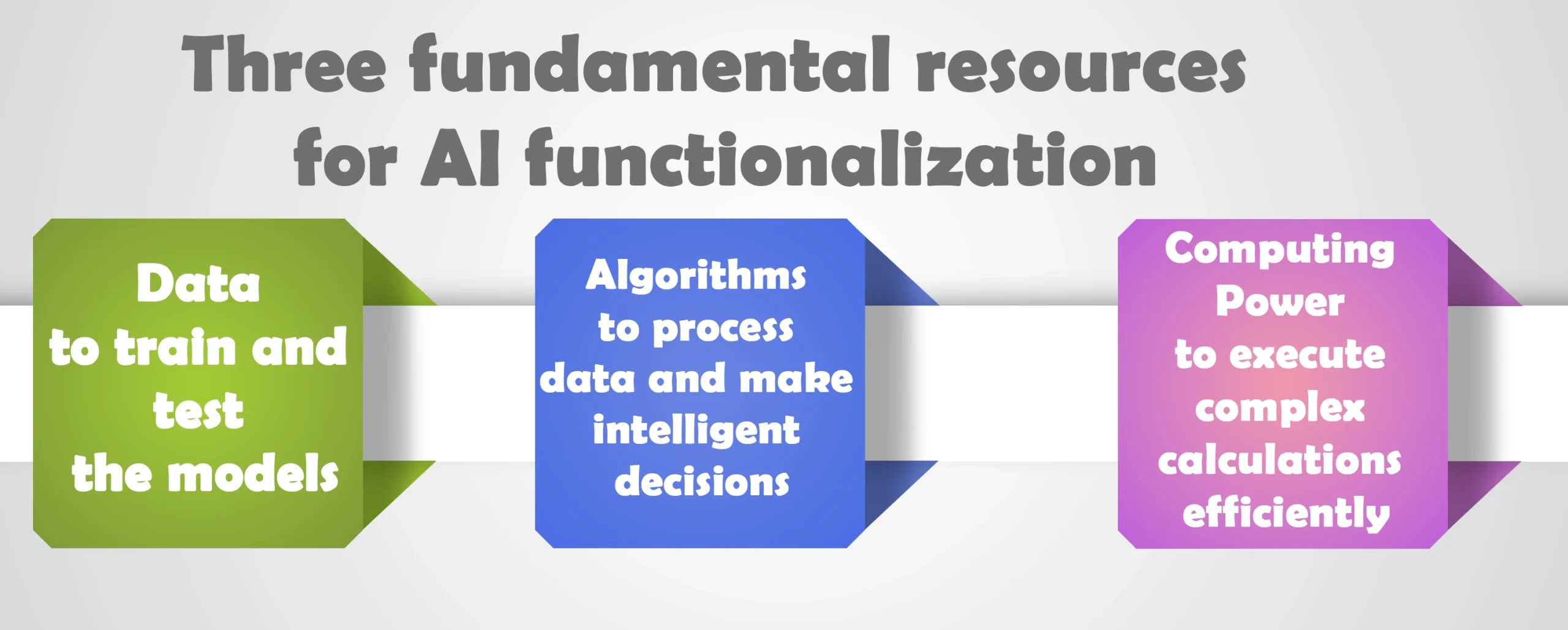The Key Components of AI:
Data, Algorithms, and Computing Power

Artificial Intelligence (AI) has transformed industries by enhancing efficiency, decision-making, and innovation. At the heart of AI lies a foundation built on three critical components: data, algorithms, and computing power. These elements work together to enable AI systems to process information, learn, and deliver intelligent solutions.
Table of Contents
In this comprehensive guide, we’ll delve into the importance of these components, how they interconnect, and why they are essential for AI development.
Why Are Data, Algorithms, and Computing Power Essential for AI?
For AI systems to function, they require three fundamental resources:
- Data to train and test the models.
- Algorithms to process data and make intelligent decisions.
- Computing Power to execute complex calculations efficiently.
Without these elements, AI applications would be unable to perform tasks like natural language processing, image recognition, or predictive analytics.

Data: The Foundation of AI
What Is Data in AI?
Data is the raw material that fuels AI systems. It includes text, images, videos, numbers, and more, all of which AI uses to learn patterns and make predictions.
Types of Data Used in AI
- Structured Data:
Organized and easily searchable data stored in rows and columns, such as spreadsheets or databases. - Unstructured Data:
Complex and unorganized data like videos, social media posts, or medical images.
The Role of Data in AI Development
AI systems rely on data to:
- Train Models: Data is used to teach AI systems how to perform specific tasks.
- Validate Models: Testing ensures accuracy and reliability.
- Refine Models: Continuous feedback from new data improves performance.
Challenges in Data Collection
- Data Quality: Poor-quality data can lead to inaccurate predictions.
- Data Privacy: Ensuring compliance with regulations like GDPR is critical.
- Bias in Data: Skewed datasets can produce biased AI outcomes.
Solutions to Data Challenges
- Use data cleaning and preprocessing techniques.
- Implement ethical AI practices to mitigate bias.
- Adopt robust encryption methods to secure data.
Algorithms: The Brain of AI
What Are Algorithms in AI?
Algorithms are sets of instructions that tell AI systems how to process data and perform tasks. They enable machines to “think” and make decisions.
Types of AI Algorithms
- Supervised Learning Algorithms
- Used for labeled data.
- Examples: Linear regression, decision trees, support vector machines.
- Unsupervised Learning Algorithms
- Handle unlabeled data.
- Examples: Clustering, principal component analysis.
- Reinforcement Learning Algorithms
- Learn through trial and error by interacting with the environment.
- Example: Q-learning.
How Algorithms Drive AI Systems
Algorithms process raw data to:
- Identify patterns.
- Make predictions.
- Learn from past experiences.
Key AI Algorithm Techniques
- Neural Networks: Mimic the human brain to recognize patterns and solve problems.
- Natural Language Processing (NLP): Enables machines to understand and respond to human language.
- Computer Vision: Helps AI interpret visual data from images and videos.
Computing Power: The Engine of AI
What Is Computing Power in AI?
Computing power refers to the hardware and infrastructure that execute complex AI computations. High-performance computing is essential for processing large datasets and running sophisticated algorithms.
Why Is Computing Power Important?
- AI applications require vast resources to handle intensive tasks like training deep learning models.
- Real-time processing in areas such as autonomous vehicles and fraud detection demands high-speed computing.
Advancements in AI Hardware
- Graphics Processing Units (GPUs): Optimized for parallel processing, ideal for training deep learning models.
- Tensor Processing Units (TPUs): Specialized hardware designed for machine learning tasks.
- Quantum Computing: Promises exponential speed improvements for solving complex problems.
Cloud Computing in AI
- Provides scalable and cost-effective computing power.
- Examples: AWS, Google Cloud, Microsoft Azure.
Edge Computing
- Processes data locally on devices, reducing latency and improving real-time decision-making.
- Examples: AI in IoT devices and autonomous drones.
The Interconnection of Data, Algorithms, and Computing Power
These components are interdependent:
- Algorithms need quality data to train effectively.
- High-performance computing power ensures that algorithms can process large datasets efficiently.
- Without robust algorithms, data and computing power remain underutilized.
Practical Example: Image Recognition
- Data: Thousands of labeled images are collected for training.
- Algorithms: Neural networks identify patterns in the images.
- Computing Power: GPUs enable rapid processing of large image datasets.
Real-World Applications of AI’s Key Components
Healthcare
- Data: Patient records and medical images.
- Algorithms: Predict disease outcomes.
- Computing Power: Analyze vast amounts of genomic data in real-time.
Autonomous Vehicles
- Data: Sensor and camera inputs.
- Algorithms: Decision-making for navigation.
- Computing Power: Process real-time data for obstacle detection.
- Data: Historical stock market data.
- Algorithms: Predict market trends.
- Computing Power: Execute trades in milliseconds.
Future Trends in AI Components
- Data Trends
- Growth in synthetic data generation.
- Increased focus on ethical data usage.
- Algorithm Innovations
- Development of more explainable AI models.
- Expansion of reinforcement learning applications.
- Computing Power Evolution
- Wider adoption of quantum computing.
- Enhanced energy efficiency in AI hardware.
Conclusion
The synergy between data, algorithms, and computing power is driving AI innovation. Each component plays a crucial role in building intelligent systems capable of transforming industries and solving complex problems.
As AI continues to evolve, advancements in these foundational elements will unlock new possibilities, shaping a smarter and more connected future.
